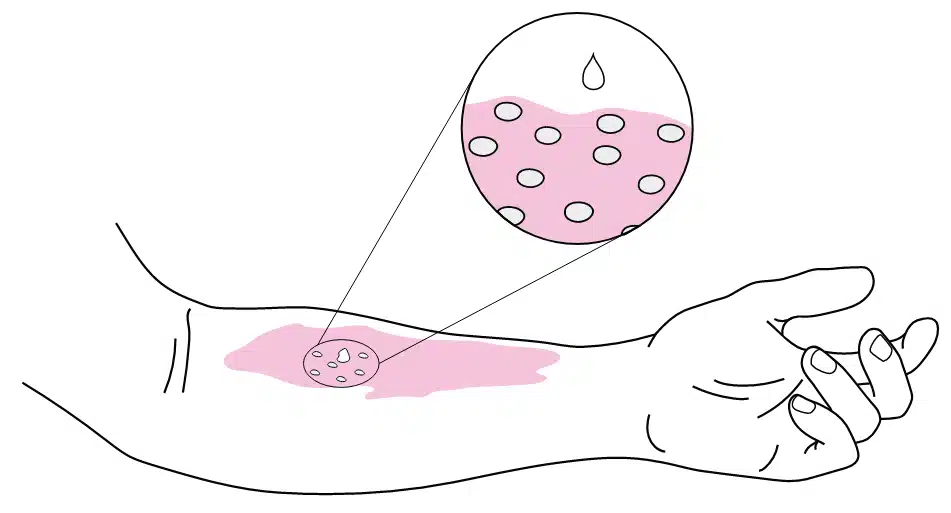
*For illustrative purposes only. The total surface area covered may vary. Your healthcare provider will follow the 1cm by 1cm application process based on the full Prescribing Information
It is important to continue weekly treatment of each treated wound(s) until it is fully healed. Once completely healed, other wound(s) can be treated with VYJUVEK.
Once you and your doctor have determined VYJUVEK is right for you, the next
step is to download and fill out this form with your doctor.
VYJUVEK is a topical gel used to treat wounds in patients 6 months and older with dystrophic epidermolysis bullosa (DEB).
VYJUVEK gel must be applied by a healthcare provider.
After treatment, patients and caregivers should be careful not to touch treated wounds and dressings for 24 hours. If accidentally exposed to the VYJUVEK gel, clean the affected area.
Wash hands and wear protective gloves when changing wound dressings. Disinfect bandages from the first dressing change with a virucidal agent, and dispose of the disinfected bandages in a separate sealed plastic bag in household waste. Dispose of the subsequent used dressings in a sealed plastic bag in household waste.
Patients should avoid touching or scratching wound sites or wound dressings.
The most common adverse reactions (>5%) were itching, chills, redness, rash, cough, and runny nose. These are not all the possible side effects with VYJUVEK. Call your healthcare provider for medical advice about side effects. You may report side effects to FDA at 1-800-FDA-1088 or to the Sponsor at 1-844-557-9782.
VYJUVEK is a topical gel used to treat wounds in patients 6 months and older with dystrophic epidermolysis bullosa (DEB).
VYJUVEK gel must be applied by a healthcare provider.
After treatment, patients and caregivers should be careful not to touch treated wounds and dressings for 24 hours. If accidentally exposed to the VYJUVEK gel, clean the affected area.
Wash hands and wear protective gloves when changing wound dressings. Disinfect bandages from the first dressing change with a virucidal agent, and dispose of the disinfected bandages in a separate sealed plastic bag in household waste. Dispose of the subsequent used dressings in a sealed plastic bag in household waste.
Patients should avoid touching or scratching wound sites or wound dressings.
The most common adverse reactions (>5%) were itching, chills, redness, rash, cough, and runny nose. These are not all the possible side effects with VYJUVEK. Call your healthcare provider for medical advice about side effects. You may report side effects to FDA at 1-800-FDA-1088 or to the Sponsor at 1-844-557-9782.
You are about to leave the VYJUVEK.com website
Are you sure you want to leave?